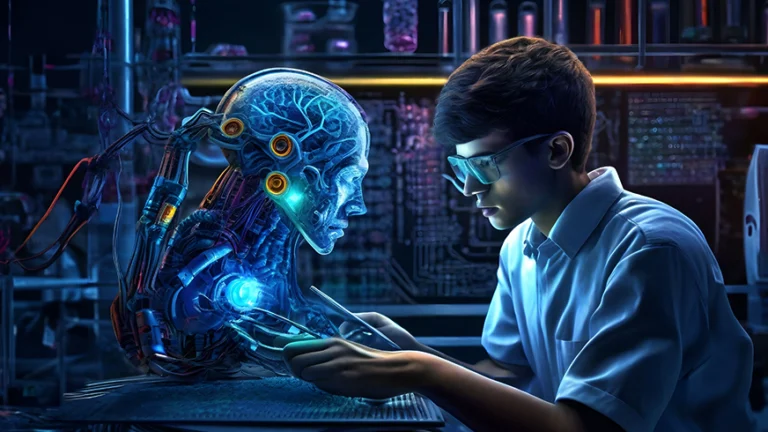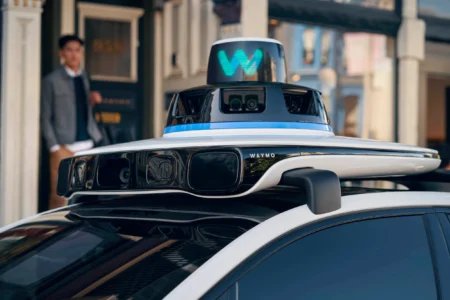Introduction
Generative AI has emerged as one of the most transformative technological advancements of our time. From AI-generated text and images to automated content creation, Generative AI in 2025 is revolutionizing industries and reshaping the way businesses operate. In this comprehensive guide, we’ll explore what Generative AI is, its applications, benefits, challenges, and the future trends that will define its growth.
What is Generative AI?
Generative AI refers to artificial intelligence systems that can create new content, including text, images, videos, code, and even music. Unlike traditional AI models that analyze and predict, Generative AI produces unique and realistic content based on patterns learned from vast datasets.
How Does Generative AI Work?
Generative AI is powered by advanced deep learning models, including:
- Transformers (GPT, Gemini, Claude) – Used for text generation
- Diffusion Models (DALL·E, Midjourney, Stable Diffusion) – Used for image and video generation
- GANs (Generative Adversarial Networks) – Used for realistic image synthesis
- VAEs (Variational Autoencoders) – Used in data augmentation and design automation
Key Applications of Generative AI in 2025
Generative AI is impacting multiple industries, enhancing creativity, efficiency, and automation.
1. Content Creation & Marketing
- AI-generated blog posts, articles, and social media content
- Automated ad copy for digital marketing campaigns
- AI-powered video editing and animation
Example: Companies like OpenAI’s ChatGPT and Jasper AI help businesses automate content creation, improving SEO and engagement.
2. Software Development & Code Generation
- AI-assisted programming with tools like GitHub Copilot
- Automated bug detection and debugging
- AI-powered low-code/no-code development
Example: AI-driven platforms allow non-coders to develop applications quickly, making software development more accessible.
3. AI in Healthcare & Drug Discovery
- AI-powered medical imaging and diagnostics
- Personalized medicine through AI-driven genetic analysis
- AI-assisted drug discovery and molecule generation
Example: Generative AI accelerates drug discovery, reducing development time and improving patient outcomes.
4. Gaming & Virtual Reality (VR/AR)
- AI-generated NPCs with human-like interactions
- AI-created game environments and assets
- Personalized AI-powered storylines in gaming
Example: AI is used in game development to create lifelike characters and dynamic virtual worlds.
5. Financial Services & Fraud Detection
- AI-generated financial reports and investment analysis
- AI-powered chatbots for customer service in banking
- AI fraud detection in real-time transactions
Example: Financial institutions use AI to enhance security, predict risks, and optimize trading strategies.
6. E-Commerce & Personalized Shopping
- AI-generated product descriptions and customer reviews
- Personalized AI-driven shopping recommendations
- AI-powered virtual try-ons and augmented shopping experiences
Example: E-commerce giants like Amazon and Shopify leverage AI to enhance user experience and increase conversions.
7. Legal & Compliance Automation
- AI-generated contracts and legal documentation
- AI-powered case law research and analysis
- Compliance monitoring with AI-driven risk assessment
Example: AI in the legal industry speeds up contract review, reducing manual workload for lawyers.
Benefits of Generative AI
Generative AI offers numerous advantages, making it an indispensable technology for businesses and individuals alike.
1. Increased Efficiency & Automation
AI-generated content reduces manual labor, allowing businesses to scale operations faster.
2. Cost Reduction
Companies save on content creation, software development, and marketing expenses by utilizing AI automation.
3. Enhanced Creativity
Generative AI serves as a creative partner, assisting writers, designers, and artists in producing high-quality content.
4. Personalization at Scale
AI enables hyper-personalized experiences, from customized content recommendations to individualized shopping experiences.
Challenges & Ethical Considerations
Despite its advantages, Generative AI comes with challenges that need to be addressed.
1. Deepfakes & Misinformation
AI-generated deepfakes can be used for spreading misinformation, posing a significant risk to media and politics.
2. Bias & Fairness Issues
AI models can inherit biases from training data, leading to discriminatory content and unfair decision-making.
3. Copyright & Ownership Concerns
Legal questions around AI-generated content ownership remain unresolved, impacting artists, writers, and content creators.
4. AI Regulation & Governance
Governments are introducing AI regulations to ensure transparency, accountability, and ethical AI development.
The Future of Generative AI: What’s Next?
The future of Generative AI is promising, with emerging trends that will shape its next phase of growth.
1. Multimodal AI Models
AI will integrate multiple modalities (text, image, video, and audio) into a single powerful model.
2. AI-Powered Personalized Assistants
AI chatbots will become more context-aware, providing real-time adaptive suggestions tailored to individual needs.
3. Real-Time AI Video & 3D Generation
AI will revolutionize film production, gaming, and metaverse experiences with real-time 3D modeling and AI-generated videos.
4. AI in Smart Cities & Sustainability
AI-powered urban planning will optimize traffic management, energy usage, and public services for smarter cities.
Conclusion
Generative AI in 2025 is transforming industries, driving innovation, and reshaping the future of work. While it presents exciting opportunities, it also demands ethical considerations, regulations, and responsible AI development.
What’s Next?
Are you ready to leverage Generative AI for your business? Stay ahead of the curve by adopting AI-driven tools, exploring AI-powered solutions, and preparing for the AI-driven future.








